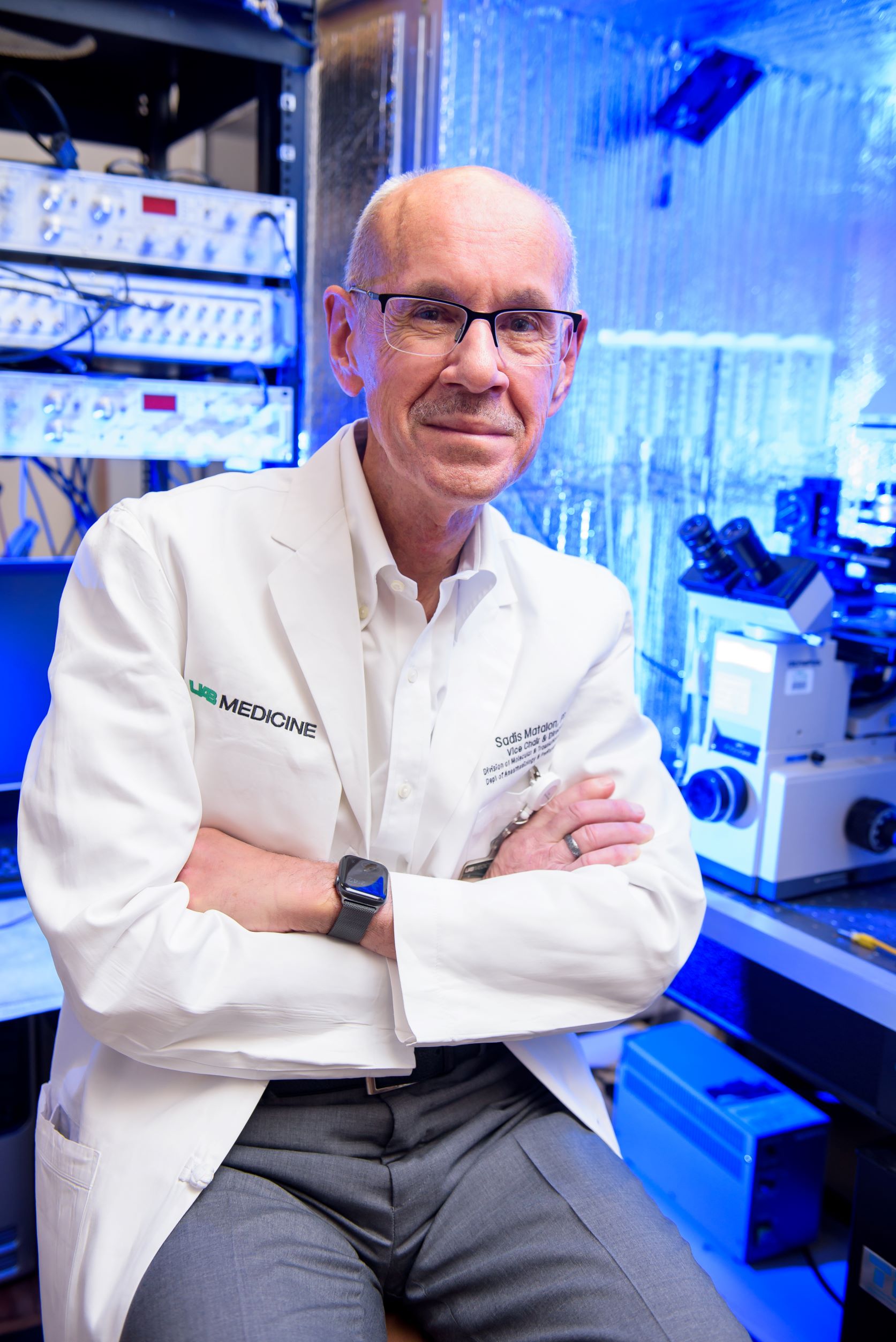 Sadis Matalon, Ph.D., Dr.Sc. (Hon.), FAPS, Distinguished Professor, Alice McNeal Chair in Anesthesiology, Director of the UAB Pulmonary Injury and Repair Center, and Vice Chair for Research, is no stranger to
Sadis Matalon, Ph.D., Dr.Sc. (Hon.), FAPS, Distinguished Professor, Alice McNeal Chair in Anesthesiology, Director of the UAB Pulmonary Injury and Repair Center, and Vice Chair for Research, is no stranger to
receiving recognition for his outstanding achievements. In 2021, he was elected Corresponding Member to the Academy of Athens (the National Academy of Athens) – a coveted recognition by scientists. He has also been selected for the Lifetime Achievement Award from the Division of Terrorism and Inhalation Disasters for the American Thoracic Society.
“Dr. Matalon is a world-renowned physiologist whose research has touched countless lives,” says Dan Berkowitz, MB BCh, Alfred Habeeb Professor and Chair of the UAB Heersink Department of Anesthesiology and Perioperative Medicine. “He continues to be a dedicated and eager leader for our department and the UAB community.”
Advancing Research Through Collaboration
As a founder of the UAB Pulmonary Injury and Repair Center, Matalon stresses the importance of centers for academia. Currently, the Matalon lab is focusing on identifying the mechanisms by which halogens (such as chlorine) damage the cardiorespiratory system of animals and developing countermeasures; which, when administered post exposure, decrease the onset of acute and chronic lung injury. He serves as the Principal Investigator of a R21 as well as co-investigator in various grants funded by the National Institutes of Health (NIH) and a subcontract from the University of Pennsylvania funded by the Biomedical Advanced Research and Development Authority.
His reach goes beyond just the UAB community: He currently serves as editor-in-chief for Physiological Reviews – the most cited journal in the field of physiology and among the 50 most cited peer-reviewed journals – where he helps shape the field of science and hopes to continue leading the journal down a path of excellence in physiological and biomedical sciences.
Matalon boasts the department has three editors-in-chief (EIC). Jean-Francois Pittet, M.D., serves as EIC of Anesthesia and Analgesia, a highly prestigious clinical journal in the field of anesthesiology. Jianguo Gu, M.B., Ph.D., serves as EIC of Molecular Pain, which publishes authoritative articles on the mechanisms of pain. In 2021, the department had a total of 90 publications, and Matalon has been a leader and mentor for several of these publications.
Recently, he has worked alongside Aftab Ahmad, Ph.D., Shama Ahmad, Ph.D., Saurabh Aggarwal, M.D., Ph.D., Ahmed Lazrak, Ph.D., Tamas Jilling, M.D., Dylan Addis, M.D., Ammar (Saadoon) Alishlash, M.D., Gu, James Mobley, Ph.D., and other faculty to facilitate the research mission of the department’s Division of Molecular and Translational Biomedicine, which he directs. Thanks to the hard work of the faculty of this division, the department is No. 14 among other anesthesia departments funded by the NIH, and Matalon’s goal is to break into the top 10.
These valuable collaborations allow for the creation of strong, focused research centers giving way for teamwork, innovation, and discovery. Matalon believes that building a stronger infrastructure, encouraging teamwork, and reinforcing the robust UAB community is key to future-proofing the department. “Being vice chair has taught me to be humble, work effectively with others, learn from the knowledge base of others, and appreciate new technology,” he says.
What's Next?
This year has been quite monumental for Matalon, and we have to wonder what is next. For starters, he is enthusiastic about continuing to pursue his research, mentoring, and leading in the department. Currently, the competitive renewal of his R01, which has been funded for 28 years, was favorably reviewed by the NIH and will be funded for 4-5 years beginning in October 2022. He also is working with a Canadian Biodefense company to develop recombinant proteins for the treatment of chemically induced acute and chronic lung injury. In addition, he is mentoring three young faculty members.
“What we are doing – it’s like the space program. In the process of getting to the moon, we developed technologies that could be used in a lot of other ways. The agents we developed can be used to treat a number of other diseases,” Matalon says. “Science is not a lone wolf telling people what to do; science is a group of people that work effectively together with complimentary expertise, willing to learn from each other. This is what drives me.”